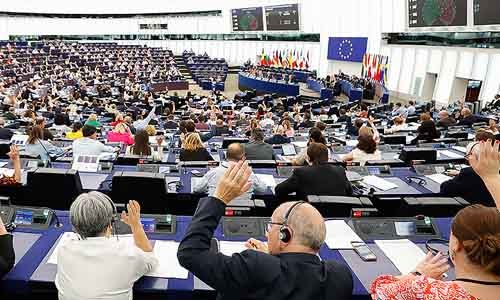
Climate models exploring how we can still limit global warming partly rely on technological and natural solutions to remove CO2 from Earth’s atmosphere, and these ‘carbon removals’ could also help in substituting fossil-based materials and doing away with related emissions. These solutions have been recognised by the EU as a way to reach its climate objectives, supported by the pulp and paper sector. The European Parliament’s vote today on the certification of carbon removals, clearly differentiating between biogenic and fossil carbon, is a step in making this a reality.
Cepi welcomes today’s adoption by the European Parliament of the Pereira report on the certification of carbon removals, where Members of the European Parliament (MEPs) endorsed the possibility to consider all biogenic carbon pools, including harvested wood products, in the certification of carbon removals. The possibility to certify harvested wood products is a needed alignment with the EU’s LULUCF regulation, which deals with land use and is a key element of Europe’s regulatory packaging on climate, the EU Green Deal.
The pulp and paper sector promotes an active management of European forests, that is adapted to local conditions and ensures their regeneration and increased growth, during which the carbon is absorbed by trees. It relies on a model that is compatible with the provision of wood-based products in a sustainable manner, while taking into consideration biodiversity.
European pulp and paper companies already offer renewable, carbon-neutral and recyclable alternatives to fossil-based materials and are increasingly investing in new bio-based products. Notably, thanks to 139 biorefineries across Europe, which are already displacing large amounts of fossil-based materials. From a regulatory standpoint, expanding this model requires a clear differentiation between certifiable biogenic and fossil-based carbon removals, now enshrined by the EU Parliament.
The European Parliament has also ensured that the certification framework aligns with other relevant legislation. Criteria defining solid biomass sustainability, already established since the revision of the Renewable Energy Directive – RED II, have been kept. This will facilitate compliance and greatly ease the certification process.
MEP Pereira’s report emphasises the priority of emissions reductions over removals, an opinion shared by the pulp and paper industry as well as a majority of EU NGOs. All economy sectors need to play their role in reducing their carbon emissions, rather than relying on ‘carbon offsets’ from forests.
Negative emissions can in fact be achieved in many other ways, for example by combining bioenergy production with carbon capture, use and storage (BECCUS) where the pulp and paper industry could also play a role. But a more developed regulatory framework on the matter is still needed in order to incentivise the deployment of these new technologies.
“Swift negotiations with the Council are now essential to support work on the development of specific carbon certification methodologies, and to finally kickstart the certification of carbon removals. The first priority, however, remains reduction and avoidance of emissions, as carbon removals should come only second to this. Setting the 2040 targets is an opportunity to better align the EU Climate Law with this order of priorities instead of having many important CO2 sources rely on sinks and offsets.”
Jori Ringman, Director General Cepi, Confederation of European Paper Industries

































